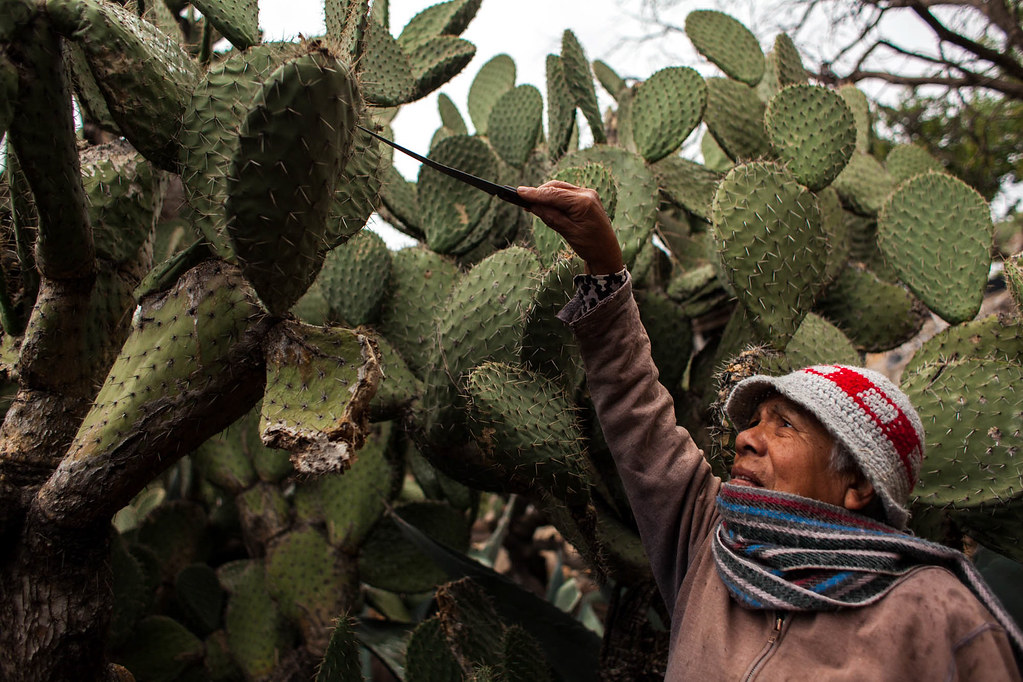
“Here, one way or another, there is never a shortage of food, while in the city everything is money,” García says.
Before the pandemic isolated Real de Catorce, tourism represented the town’s main source of income, with more than 20,000 visitors per year, according to Felipe Frías Saucedo, the town’s former director of Municipal Tourism. Though the disease itself barely surfaced in the semi-desert town of 1,300 inhabitants, the pandemic forced the town to prevent tourists from entering, effectively halting the spread of the disease — as well as the main motor of the economy. But for many of the residents of the town, the economic shortage has reminded them of the natural richness that can be found in the area. For García, who lost his construction job due to the pandemic, that has meant tapping into an ancestral knowledge of traditional wild fruits.
Real de Catorce is a hidden town, its vegetation characterized by high desert plants like agave and prickly pear cacti. The town was originally founded as a colonial silver mining town in 1876. When mining declined at the beginning of the Mexican Revolution in 1910, most people left, transforming a prosperous community into a ghost town.
Those residents who lived through the post-mining bust turned to agriculture to sustain themselves. Corn, beans, and legumes, along with cactus and other wild fruits, were essential to the small community that prevailed in the silver shortage.
Years later, Real de Catorce came back to life due to the arrival of Hollywood. The town’s rich history, colonial architecture, and easy access to the desert and El Quemado, one of the most sacred places for the Indigenous Wixarikas community, put the town back on the map. In 2001, Real de Catorce became the second town given the title of “Magic Town” by Mexico’s Secretariat of Tourism’s “Magical Towns Program,” making it one of the most desirable tourist destinations in the country.
The arrival of tourism brought the town a new lifestyle with some benefits: easy money, a growing economy, and a variety of products not easily available here before. But this shift in the base of the economy consequently distanced the inhabitants of the town from their ancestral and agricultural knowledge. The corn fields disappeared as groceries, hotels, and commercial establishments began to pop-up around the town.
"fruit" - Google News
February 08, 2021 at 03:53PM
https://ift.tt/39V1wyG
Fruits of the Desert - Earth Island Journal - Earth Island Journal
"fruit" - Google News
https://ift.tt/2pWUrc9
https://ift.tt/3aVawBg
Bagikan Berita Ini














0 Response to "Fruits of the Desert - Earth Island Journal - Earth Island Journal"
Post a Comment